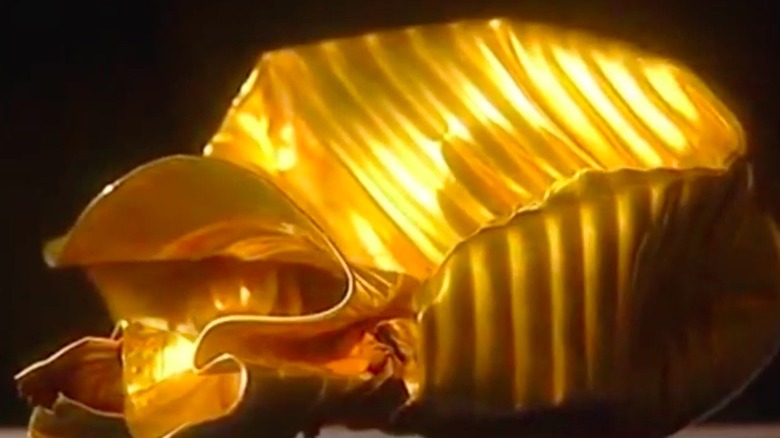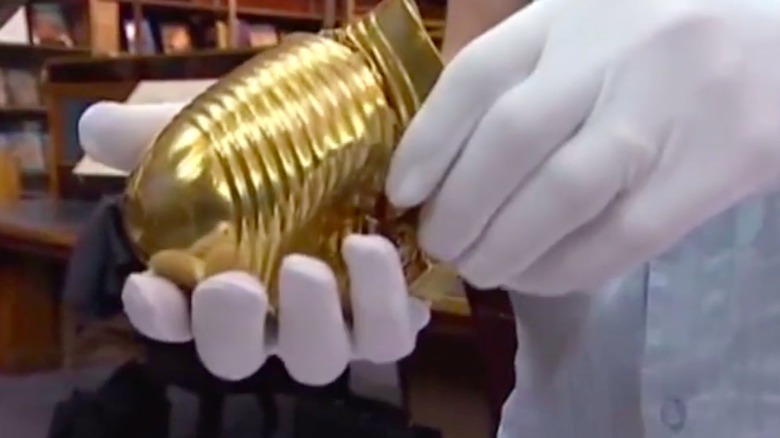This Cup Is Believed To Be One Of The Oldest Treasures Ever Found In England
The British Museum is full of incredible finds from throughout history, including statues, artwork, and even armor. But one of the most impressive objects in its collection is much less obvious — a small golden cup is believed to be one of the oldest historical artifacts in the museum.
The Ringlemere Cup got its name from the farm where it was found in Southern England (via the British Museum). A man named Cliff Bradshaw found it with a metal detector in 2001. The museum estimates it was made sometime between 1700 and 1500 B.C., and it's one of only two Bronze Age cups in its collection. The cup itself is crumpled, likely the result of a farmer's plow. It sits at about 14 centimeters tall, with corrugated sides and a rounded base (via The Vintage News). Several other cups have been found around Europe from approximately the same time period.
What was the Ringlemere Cup used for?
The British Museum lists the Ringlemere Cup as one of the oldest in its collection. Because it is dated to some time between 1700 and 1500 B.C., it's also suspected to be older than most other items found in Britain so far.
The cup was found in the same area as an important chieftain's grave, according to The Vintage News. But some archaeologists don't believe it was left there for the chieftain or as a grave offering. Instead, they theorize it was a votive offering left for a religious or sacred purpose. These types of items were often meant to gain favor with gods (via Oxford Classical Dictionary). The cup isn't flat on the bottom, the museum notes, which indicates it was likely held and passed around instead of set on a surface. That indicates it might have had a ceremonial purpose, according to Portable Antiques Scheme.
The cup was likely placed at the center of a deliberately constructed mound in the area, according to the British Museum. But very little of the land remained that way when the cup was discovered due to plowing and development.

